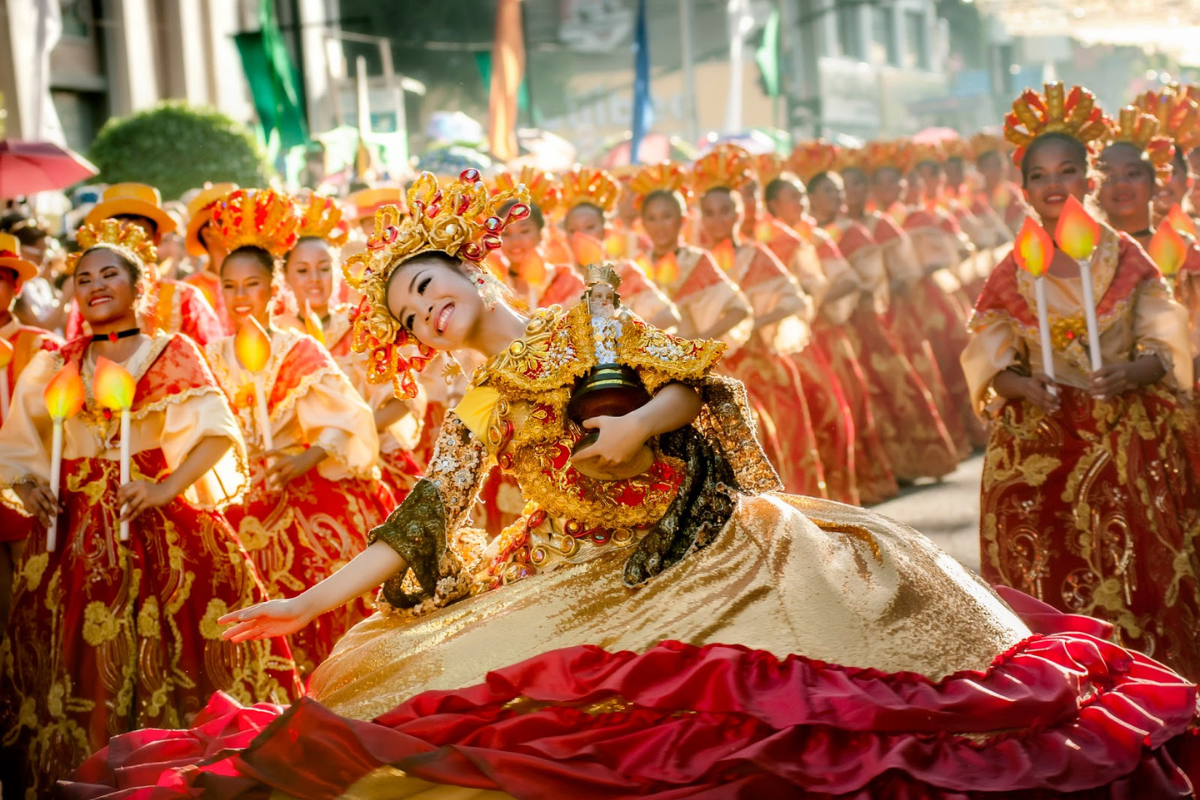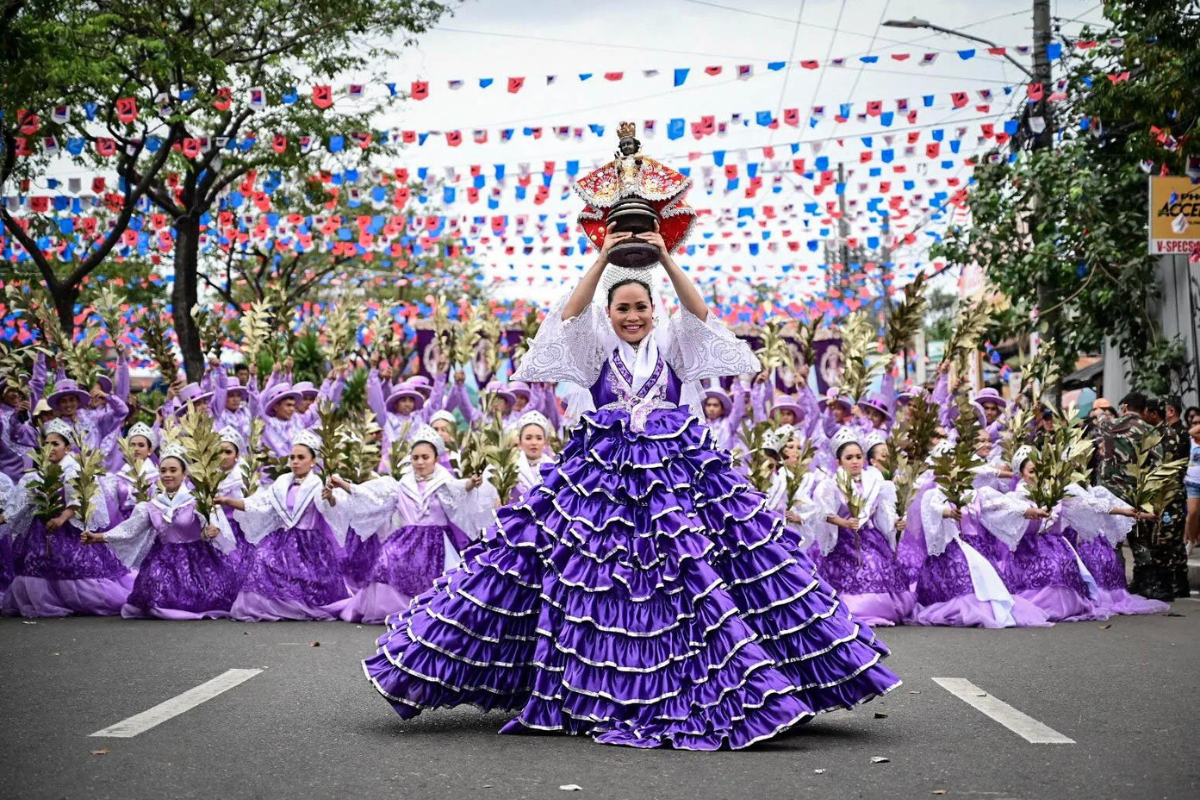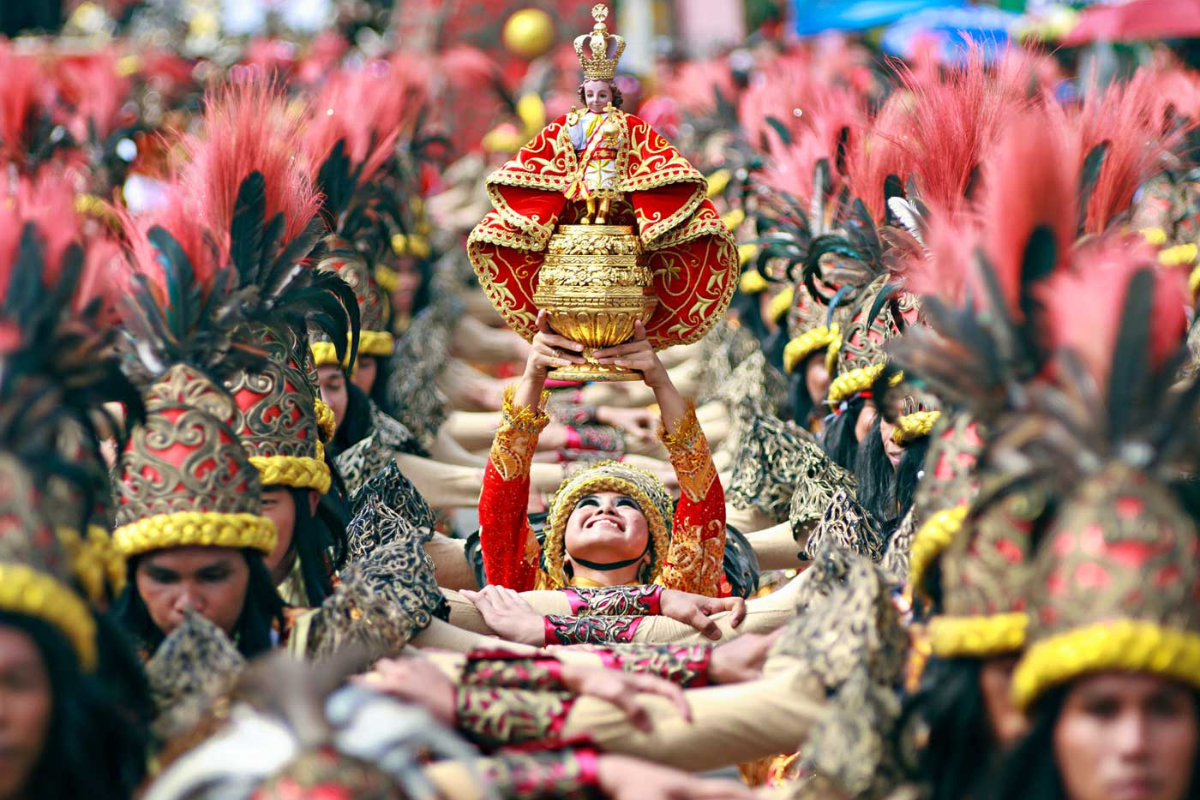The Sinulog Festival is a month-long celebration in Cebu City, Philippines, honoring the Santo Niño, or the Child Jesus. It is considered one of the grandest and most popular festivals in the country, drawing millions of local and international visitors each year.

Photo: Culture Festivals
Nestled in the heart of the Philippines, Cebu City comes alive every January with a vibrant tapestry of culture, faith, and celebration – the Sinulog Festival. This month-long extravaganza, culminating in the grand parade on the third Sunday of January, honors the Santo Niño, or the Child Jesus, a revered religious icon deeply embedded in Cebu’s identity.
The Sinulog Festival traces its roots back to the 16th century when Portuguese explorer Ferdinand Magellan arrived in Cebu. Seeking to spread Christianity, Magellan presented a statue of the Santo Niño to Hara Amihan, the wife of the local chieftain, Rajah Humabon. This gift marked a pivotal moment in Cebu’s history, as it signified the beginning of the region’s conversion to Christianity. The Santo Niño quickly became a revered icon, deeply embedded in the hearts and minds of the Cebuano people.
The Sinulog Festival is a month-long celebration, culminating in the grand parade on the third Sunday of January. The parade features a procession of the Santo Niño statue, along with elaborate floats, colorful costumes, and energetic street performances.
The grand parade: A spectacle of faith and culture
The grand parade is the highlight of the festival, held on the third Sunday of January. It features a procession of the Santo Niño statue, along with elaborate floats, colorful costumes, and energetic street performances.
The procession of the Santo Niño is the most important part of the grand parade. The statue is carried on a golden carriage, surrounded by flowers and devotees. The procession starts at the Basilica Minore del Santo Niño and winds its way through the streets of Cebu City.
The floats are one of the most popular aspects of the grand parade. They are decorated with colorful lights, flowers, and statues of saints and religious figures. Each float has a different theme, often related to the Sinulog story.
The dancers add to the festive atmosphere of the grand parade. They wear colorful costumes and perform traditional Cebuano dances. The grand parade is a major tourist attraction. Millions of people come to Cebu City each year to watch the parade. The streets are lined with spectators, who cheer and wave as the floats and dancers pass by.

Photo: Rappler
The grand parade has been a part of the Sinulog Festival for centuries. It is a tradition that is passed down from generation to generation. The parade is a source of pride for the Cebuano people and a reminder of their faith and heritage. This is a captivating spectacle that showcases the region’s deep-rooted faith, vibrant culture, and warm hospitality. The parade is a testament to the resilience of the Cebuano people, their ability to celebrate life with unwavering faith and joy, and to find strength and unity in their shared devotion to the Santo Niño.
Sinulog festival: A celebration of resilience, faith, and hope
The Sinulog Festival in Cebu, Philippines is more than just an annual celebration. It is a testament to the enduring spirit and devotion of the Cebuano people. Through the years, the festival has not only survived but thrived amidst challenges, serving as a beacon of hope and unity in the face of adversity.
Cebu has faced its share of trials and tribulations throughout its history, from natural disasters to economic setbacks. Yet, through it all, the Sinulog Festival has remained a constant, a symbol of resilience and hope. In the aftermath of Typhoon Yolanda in 2013, for instance, the festival took on a heightened significance, providing a much-needed source of comfort and unity for the devastated community.
The Sinulog Festival is a vibrant tapestry of faith, culture, and celebration. The grand parade, the festival’s culmination, is a dazzling spectacle of elaborate floats, colorful costumes, and energetic street performances. The procession of the Santo Niño statue is a poignant moment, filled with devotion and reverence.

Photo: Wander Ken
The Sinulog Festival is more than just a month-long celebration. It is a legacy of devotion, a testament to the enduring faith and cultural heritage of Cebu. It is a time to honor the Santo Niño, to express gratitude for blessings received, and to reaffirm the deep-rooted values that bind the Cebuano community together.
The Sinulog Festival has a significant impact on tourism in Cebu. It is estimated that the festival generates billions of pesos in economic activity each year. The festival also helps to promote Cebu as a tourist destination, attracting visitors from all over the world.
For the people of Cebu, the Sinulog Festival is an integral part of their identity, a source of pride, and a beacon of hope. It illuminates their journey through life’s challenges and celebrations, reminding them of their strength, resilience, and unwavering faith.

